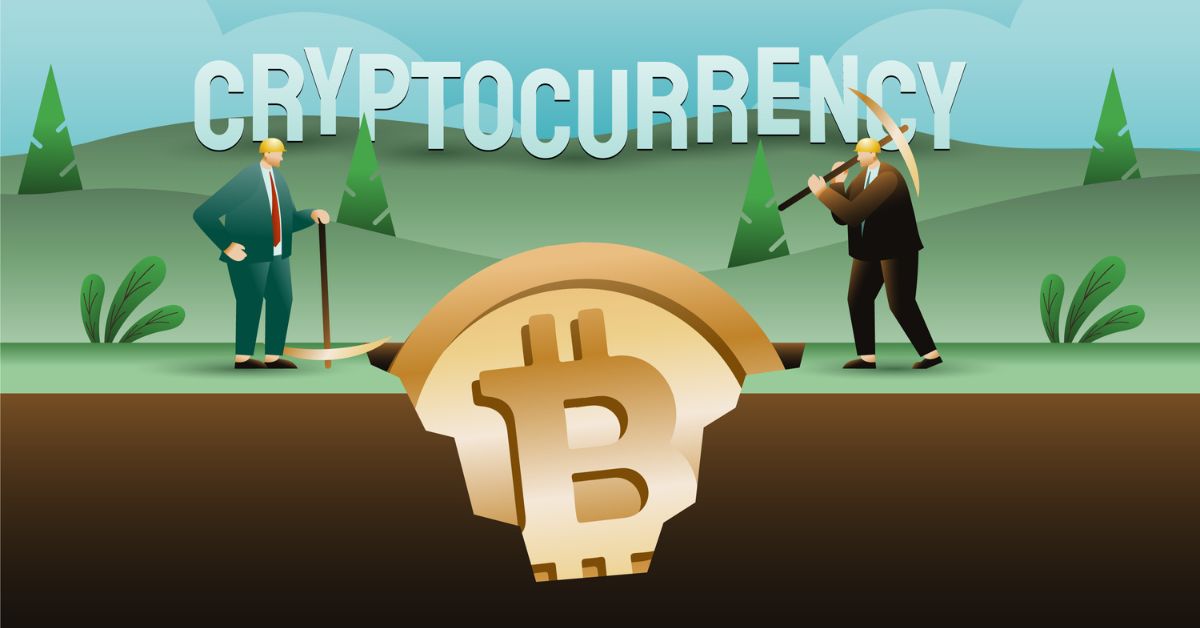Cryptocurrency has become an integral part of startups and growing business ventures. While some companies use it for internal purposes, others build businesses around it. Today, we would like to review GoMining’s experience in this area and answer the question — is GoMining worth it?
GoMining is a project with the sole purpose of making Bitcoin mining affordable and accessible to wide audiences. Mining is carried out through a digital miner — an NFT token that represents the hash power and energy efficiency of physical miners in a data center.
However, a project like that, with strong ties to the crypto industry in general, can’t exist without its own token.
Why do Projects Use Tokens
Generally speaking, we are used to defining four types of tokens on blockchain: utility tokens, security tokens, payment tokens, and stablecoins. Each one has its own purpose:
- Utility tokens provide access to a product, service, or the system itself like BNB on Binance or TRX on TON.
- Security tokens represent assets, such as bonds, stocks, or RWAs. Among other things, they can be used to finance a project at its early stages.
- Payment tokens are used to transfer money within a blockchain without intermediaries. Bitcoin is the most famous example.
- Stablecoins are tether currencies that maintain a value similar to their fiat counterparts (USDT, USDC).
Most platforms mix and match the role of a token since a more diverse application means more value to the user.
How the GOMINING Token is Used
Like many projects, GoMining introduced its own token in the early days of the project’s existence. GoMining’s native token is GOMINING and it has several functions:
- Payments. The token isn’t required to pay for the platform’s services. In fact, there is no service fee on GoMining, but Bitcoin mining requires maintenance, whose cost is by default deducted from a user’s mining rewards. If the user decides to pay these maintenance fees with the native token instead, they receive a discount.
- Governance. The GoMining ecosystem relies on voting, which is where veTokenomics comes into play. Users who stake GOMINING tokens, receive a number of votes that they can use to make decisions regarding the rewards distribution, as well as important changes within the ecosystem itself.
- Rewards. Rewards for some competitions on the platform are paid in GOMINING tokens.
- Access to the Launchpad. In a recent release, GoMining has introduced its new product — a Launchpad for BTC startups. This launchpad allows users to buy project tokens, and access to this platform is gained by purchasing GOMINING tokens.
GOMINING is quite different from most other tokens. The company chose to not make its use necessary but to provide perks and opportunities to those who choose to use it. In a way, this is a tried and true method of introducing a hypothesis and seeing if it works. This is advantageous for both the project and its users for two key reasons.
Users want to interact with a product without complications and additional barriers. GoMining chose to allow users to test-drive the product before committing to its native token.
From the company’s standpoint, it’s also a preferred path, since working on a product that ultimately can’t hold users’ interest is a waste of both time and effort.
GoMining and Tokenomics
Each token, including project tokens, has the potential to go up in price, thus bringing additional revenue to the company and users. This largely depends on the tokenomics. GoMining relies on the Burn and Mint equilibrium model to maintain demand for the tokens. This is the same model used by Helium. In it, the “value-seeking” tokens are burned and users instead receive the payment tokens that they spend on the services within the platform. GOMINING tokens are minted with a different coefficient during each epoch. During the zero epoch, it was 0.8, and during the first one — 0.81. With the initial supply of 436,915,240 tokens, the system is designed for 20 epochs.
Without going into calculations, we should mention that what it means, in reality, is that the number of minted tokens is always lower than the number of burned ones.
This is a long-term system that has a purpose. It’s not just to maintain the token’s value and demand, it’s to show that the company is not only considering the future but preparing for it and the GOMINING token has a place in it. From both marketing and investment perspectives, it’s something every project should consider. Long-term goals are an essential part of any business plan, and detailed tokenomics shouldn’t be overlooked.
While digital mining remains the main objective for GoMining, users can certainly benefit from utilizing the native token, raising the interest for the project itself.
Tokens for Non-Crypto-Related Companies
Interestingly enough, tokens aren’t often a sign of a crypto project. Just like the blockchain technology itself, they have transcended one area and there are examples of internal cryptocurrencies being introduced for motivation and rewards within a company, tokenizing assets to raise awareness, and so on. Even as a newsworthy event, tokens still can be advantageous.
Having gone through the whole process of developing a token, coming up with its name, and selecting the best appropriate tokenomics model, we can say that whichever type of token suits your venture, it’s important to consider the necessity of introducing it as well as follow the proper security steps to assure its quality.
Here is a short guide to creating a token:
- Define the purpose of the token.
- Select the appropriate tokenomics model and the chain for it to be released on.
- Develop the token (either with your internal development team or with a third-party contractor).
- Complete a security audit.
- Prepare a marketing strategy.
- Deploy the token.
ALSO READ: A Comprehensive Guide to NewzNav.com Crypto Archives Page

